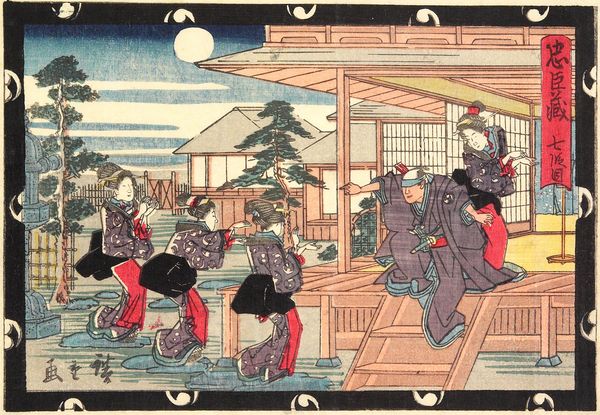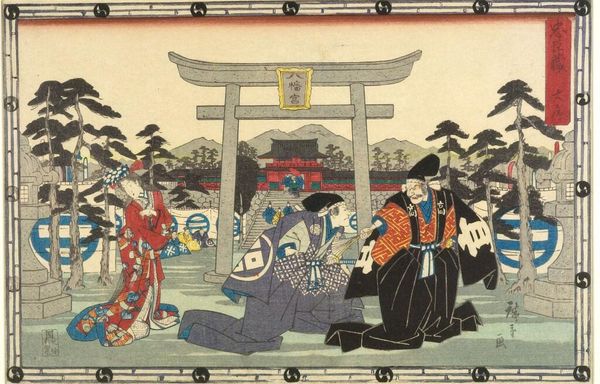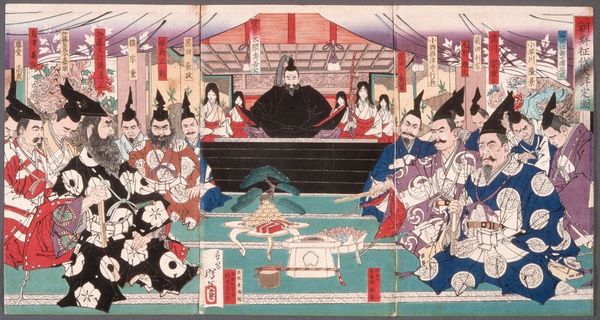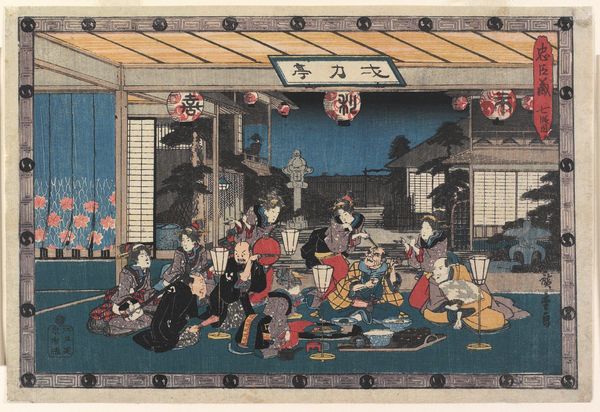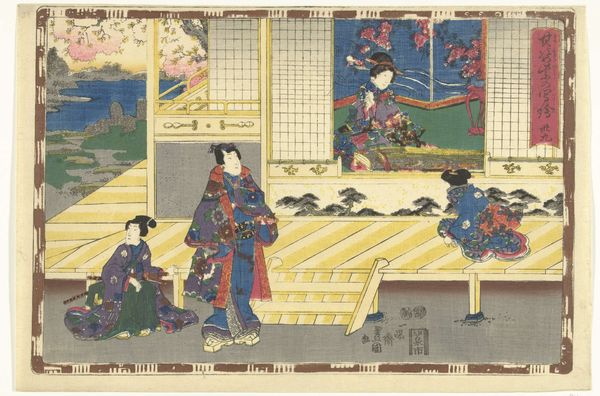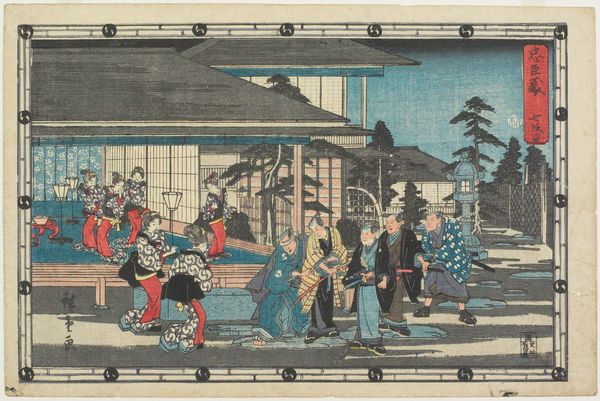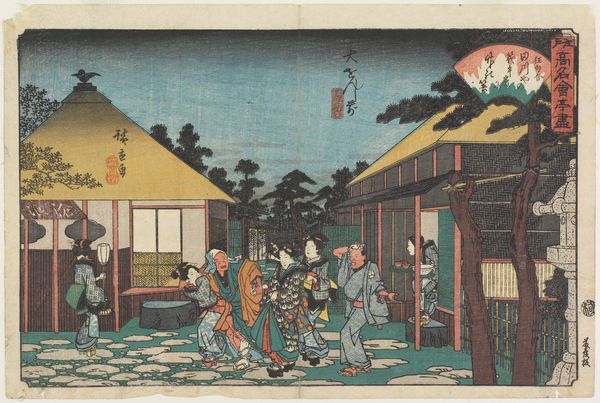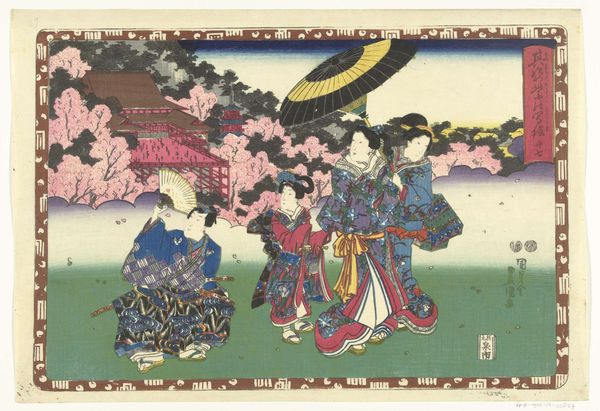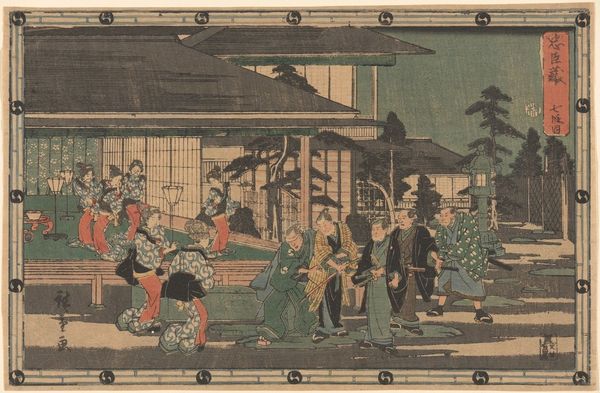
print, ink, woodblock-print
# print
#
asian-art
#
landscape
#
ukiyo-e
#
figuration
#
ink
#
woodblock-print
#
genre-painting
Dimensions: 8 7/8 × 13 11/16 in. (22.5 × 34.8 cm) (image, horizontal ōban)
Copyright: Public Domain
Utagawa Hiroshige’s woodblock print, Prologue, now at the Minneapolis Institute of Art, captures a theatrical scene rife with cultural significance. Hiroshige, living through Japan's Edo period, navigated a society marked by rigid social hierarchies. This print, with its depiction of kabuki actors, offers a glimpse into the intersection of art and social expression during that time. In this print we see not just a performance but a tableau of gendered expectations and class distinctions. The female figure, adorned in a vibrant kimono, stands in contrast to the kneeling male figure, possibly hinting at the performative aspects of gender roles within the kabuki tradition. The prominent figure in the center, dressed in formal attire, directs the scene, asserting the power dynamics inherent in the theatrical world. Consider how Hiroshige uses the architecture of the shrine to frame the scene, subtly commenting on the relationship between performance, ritual, and societal norms. This work serves not only as a piece of art but as a mirror reflecting the complex interplay of identity and status in Edo-period Japan.
Comments
minneapolisinstituteofart almost 2 years ago
⋮
To prevent subversive performances, the government forbade the presentation of recent events. The playwrights of Chñshingura avoided censorship by adding a number of fictionalized subplots and by setting it in the 14th century. They also created names for their characters, though people soon figured out which theatrical character represented each historic personage. The disgraced lord Asano became Enya Hangan, and his enemy Kira became Kø no Moronao. Showing a scene from act 1, this print depicts the confrontation between Moronao and Enya's colleague Momoi Wakasanosuke, not Enya himself-another twist to the factual account. Gripping his sword hilt, Wakasanosuke, dressed in purple ceremonial attire, barely contains his anger. In black, Moronao provokingly waves his fan at him, as if fanning the young man's anger. The woman behind Wakasanosuke is Enya's wife, Kaoyo, who suffered Moronao's untoward romantic advances. Their demeanors well convey the tension among them, which ultimately results in the fatal event in act 3.
Join the conversation
Join millions of artists and users on Artera today and experience the ultimate creative platform.
